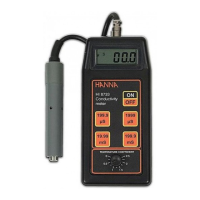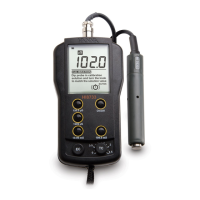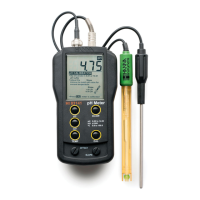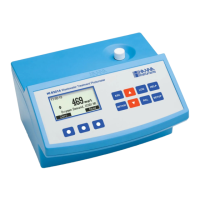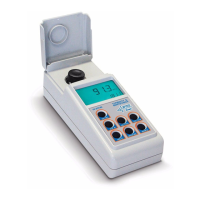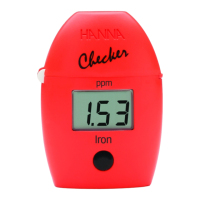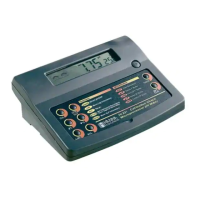• Open the instrument lid, slightly rotate the
cuvet and take a new reading.
• Repeat the last step for the second cuvet until the reading is within 0.01 NTU of the value
obtained for the first cuvet.
• Alternatively, keep the “Read” functional key pressed and, after the first value is displayed,
open the lid and start rotating the cuvet until the read value matches the first cuvet.
• Mark this position on the second cuvet with a water resistant pencil.
• Follow the same procedure for all the cuvets you need.
Note: If the cuvet is indexed, use the index to position it in the instrument.
SAMPLING TECHNIQUE
When taking turbidity measurements it is very important to select a representative sample. For
consistent results, follow the next tips when sampling:
• Gently mix the water before taking the sample.
• If the sample is taken from a pipe, discard the first few liters.
• If measuring a non uniform source, collect samples from different places and mix them.
When measuring the collected sample, keep in mind the following:
• Samples should be analyzed immediately after collection because the turbidity can change in time.
• To avoid dilution of the sample it is better to rinse the cuvet with a quantity of sample and then
discard. Only after this you can fill the cuvet with sample.
• Pay attention that cold samples do not condense on the sample cell.
REMOVING AIR BUBBLES (TURBIDITY only)
Any air bubbles present in the sample will cause high turbidity readings. To obtain accurate
measurements, remove the air bubbles using one of these methods:
• Application of a partial vacuum;
• Addition of a surfactant, such as Triton X-100;
• Insert the second cuvet into the instrument and
take a reading.
13
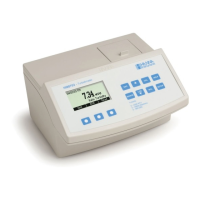
